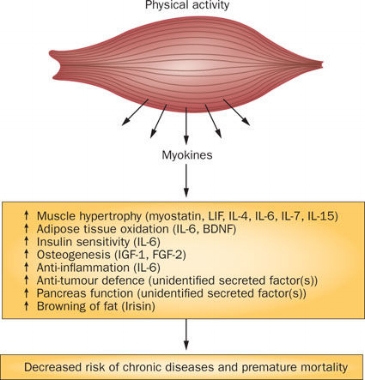Each week I look forward to a runner’s high at an intensity level I rarely achieved by running. I don’t run anymore. After a couple of foot surgeries my running days are over. It takes me about 22 to 25 minutes to get to this relaxed euphoric state, and it stays with me the rest of the day.
While this state is subjective there is an objective proxy to gauge the intensity of this high. One of the attributes of a runner’s high is lower blood pressure. With the runner’s high my blood pressure remains 10 to 25 points lower for up to 24 hours before returning to my normal reading.
Runners have long known that if you run long enough and hard enough you will experience a runner’s high. It wasn’t until 1975(1) that scientists pinpointed what prompted the runner’s high. It is a group of hormones called endorphins. Endorphins activate specialized receptors throughout the nervous system that block pain messages, they reduce the release of chemicals that cause inflammation and swelling, and they lower pressure.
To get your body to release these endorphins by running, the run has to demanding enough to produce an anaerobic response that results in the build-up of lactic acid. According to one study(2):
“Intensive running with an anaerobic response causes an increase in the concentrations of β-endorphin…whereas slight aerobic exercise did not elicit any response.”
Less demanding steady-state endurance running will release endorphins too, but it takes more running. According to this study(3):
“In endurance exercise performed at a steady-state between lactate production and elimination, blood beta-endorphin levels do not increase until exercise duration exceeds approximately 1 hour.”
If running is not an option you can still release those endorphins. Another study(4) found that:
“The results of this study indicate that acidosis [The buildup of lactic acid] rather than any other physiological change associated with high-intensity exertion is the primary stimulus for beta-endorphin release.”[Runner’s high]
The key here is that high-intensity exertion results in the buildup of lactic acid. Strength training can do that, particularly if there is less rest between exercises. One study(5) found that strength training with one minute rest between exercises produced a greater endorphin response than a workout with three minutes rest between exercises. Less rest results in a larger lactic acid buildup.
The high intensity training (HIT) we do at our Austin Personal Training facility is a series of strength training exercises working all the major muscle groups with little rest between exercises. In the photo above most of this 25 minute HIT workout is in the hardcore zone where there will be a buildup of lactic acid and a subsequent endorphin release.
Your trainer will have you build up to HIT slowly and see that you are constantly breathing and maintaining form. People of any age can do this. Over time you’ll be at a higher exertion level, produce more lactic acid, and have a significant endorphin response. Endorphin levels can remain elevated for hours and even into the next day. Your aches and pains will subside, you’ll be less stressed, your mood will improve, and you’ll sleep better. It is your body’s natural high.
Request a complimentary first session at Kelly Personal Training
Click here to schedule a session to try it yourself
*Before you stop by please call us. We operate by appointment.







